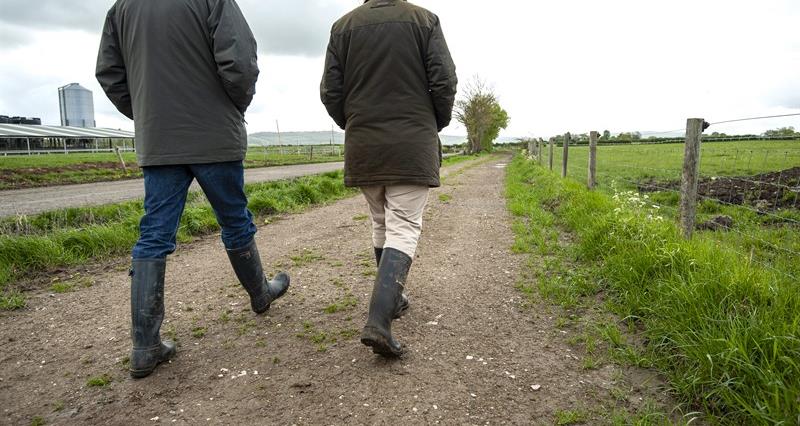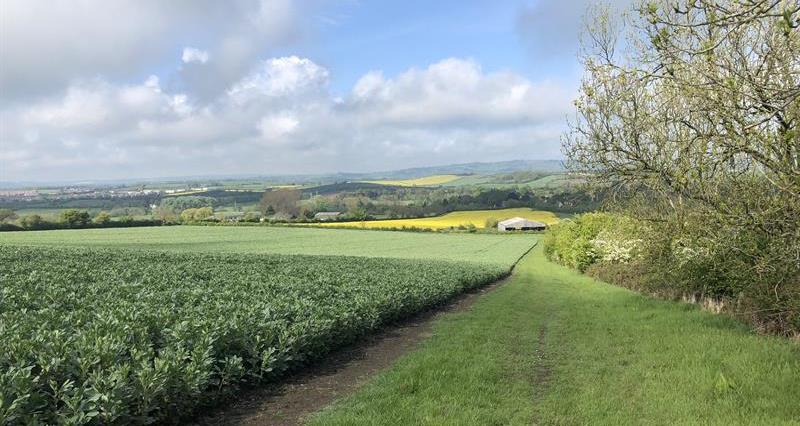Annual revenue claims
Claiming
To be paid for the revenue actions in a CS (Countryside Stewardship) Mid Tier, Higher Tier or ES (Environmental Stewardship)/HLS (Higher Level Stewardship) agreement, including agreements that started in 2025, an annual revenue claim must be submitted during the revenue claim window.
The 2025 revenue claim window for CS and ES/HLS opened on 17 March, a claim must be submitted by 11:59pm on 15 May to be paid without reduction. If a claim is submitted after this date, the later it is submitted, the greater the percentage reduction. The final deadline is 11:59pm on 1 September. No claim payment will be made after this date.
CS revenue claims can be made online using the streamlined process. If there are no changes to the claim from last year, you can generate and submit an automated revenue claim on the Rural Payments Service.
Before submitting a CS claim, please make sure the land use codes recorded for the land parcels are correct and consistent with the claim by signing into the Rural Payments service. Failure to do this may lead to processing delays and hold up payments.
If you are unable to access the Rural Payments service or there are changes to your claim from last year, you will need to contact the RPA. Email: [email protected], phone: 03000 200 301.
For ES, you will receive your claim form by either email or post. You will need to complete it and return it to the RPA before the deadlines to submit a successful claim.
Incorrect dates: The RPA has advised that those requesting a CS form directly from the RPA may find the claim form they receive contains incorrect dates for the reductions, if submitted after 15 May. An additional letter will explain this alongside the claim form.
CS customers submitting a CS claim online will be able to generate a claim summary once they have created their claim, however the summary will contain incorrect dates and information relating to reductions, if claims are submitted after 15 May, the RPA has advised.If you are in any doubt, refer to the dates on .
Payments
Payments for revenue claims made earlier in the year typically begin in December, but can be made anytime between December and June.
On 11 February 2025, the RPA began paying eligible CS agreement holders who claimed a partial payment in 2024 ŌĆō this is for those who are yet to receive a 2024 claim payment.
These payments will be up to 75% of a total claims value. Unfortunately, there will be some who are unable to receive a partial payment due to further outstanding checks needing to be completed for their claim, or because a full payment is imminent.
Those wanting an individual update should contact the RPA helpline on 03000 200 301.
Changes to T&Cs
All existing EU agri-environment agreements moved to domestic (UK) T&Cs (Terms and Conditions) on 1 January 2023.
The move allows for a simplification of the schemes which in turn will help to create greater flexibility and opportunities for agreement holders, an ask the NFU has continued to lobby for. These flexibilities are outlined below.┬Ā
A summary of the main changes to the T&Cs is available on GOV.UK for each scheme:
Capital grants
Capital grants can form part of your CS mid or Higher Tier agreement, or a standalone grant agreement. There are some capital grants available if you are in agreement. More information can be found at: .
Capital grant claims can be made at any time of the year if it is:
- within three months of the end of your agreement ŌĆō a late claim reduction will apply if the claim is received between three and six months.
- after the capital work is finished
- after you have been charged or invoiced.
Multiple partial capital grant claims can be made for most, but not all, options as long as that part of the work is complete and invoiced. This can help manage cash flow for work which is often completed in stages.
- RPA guidance on submitting a CS revenue or capital claim can be found on: .
- RPA guidance on how to get a payment for a ES/HLS agreement can be found at: .
Flexibilities
Site visits and administrative checks
There is greater flexibility to the RPA's approach to site visits (previously called inspections) and administrative checks.
This includes a longer notice period given to agreement holders before a site visit and in some cases virtual site visits.
The field officers (previously called inspectors) will take a new supportive and farmer focused approach. More information about this approach can be found on this RPA blog:
Breaches, repayments, and penalties
Where there is a difference between what is being delivered in the agreement and what is being claimed the RPA, following checks, will recover any difference.
If the RPA has already paid the agreement holder, they will recover the difference.
Additional penalties however will not be applied but reductions will still apply to late payment claims.
There will be no payment recovery for exiting an agreement early and entering another environmental scheme.
HLS extensions
At NFU Conference, following NFU lobbying, the Secretary of State announced an uplift to HLS payments, worth ┬Ż30 million. The individual option payments rates will be published soon. Agreement holders will be written to in April.
The RPA is offering a two-year extension to eligible HLS agreements expiring in 2024. Natural England has already approved these agreements for extension. If your agreement has already expired, you can only request an extension if you have continued to manage your land in accordance with your agreement.
For HLS agreements expiring in 2025, Natural England will review each case and recommend either a one or two year extension.
Defra previously announced its intention to retire HLS agreements and encourage their transition to SFI or CS. The final HLS agreements will expire in 2028.
Find out more at: .
CS mirror agreements
If your Higher Tier agreement expires at the end of 2024, or is partly expiring, youŌĆÖll be offered a mirror agreement with the same duration. The agreement will be identical to your existing agreement.
If your agreement contains an SSSI, you will need to contact Natural England separately to update the SSSI consent to match the duration of your new CS Higher Tier agreement.
Find out more at: .
Transferring between schemes
The ability to move between agreements is another one of the flexibilities created as a result of existing EU agri-environment agreements moving to domestic T&Cs from 1 January 2023.
Currently, there is no formal process to enable transfers between schemes such as HLS and CS to SFI. ╗╩╝ę╗¬╚╦is lobbying the new government for arrangements to be put in place and guidance to be issued.
Defra intends to introduce an automatic process this year. To ensure continuity of support, Defra is offering mirror or extensions to CSHT or HLS agreements expiring soon.┬Ā
The NFUŌĆÖs current understanding is an agreement will need to be terminated before an application can be started for a new scheme. For the agreement you are leaving, you will be paid until the last complete agreement year. If you leave part way through the agreement year, you will not be paid for the part-year.
HLS agreements can only transfer to the ELM offer through DefraŌĆÖs formal process, when that is launched.
The new agreement will not need to have the equivalent options in it.
Guidance can be found at: .
Stacking CS/ES/HLS and SFI
Defra will not allow payment for the same action twice. Some of the scheme actions are however different, this means that some options and agreements can be stacked in the same area.
Interaction between an SFI agreement and CS depends on the standard and type of agreement (revenue or capital). Each SFI action sets out which CS or HLS options are compatible.
More information about how SFI interacts with CS/ES/HLS can be found at
Defra is aiming for a single integrated online service where farmers can select the combination of actions across SFI and CS that work for them. This will not be available in the short term.



